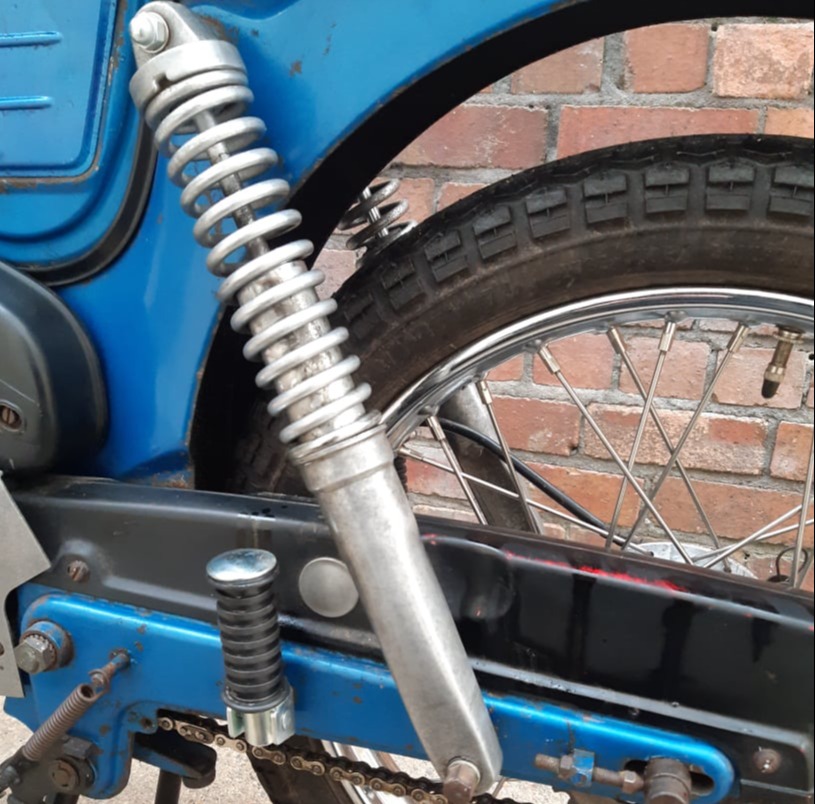
Puch VF/VZ50 Rear Shocks Rebuild
One of the Puch rear shocks was leaking oil so they were both reconditioned using the following steps.

One of the Puch rear shocks was leaking oil so they were both reconditioned using the following steps.
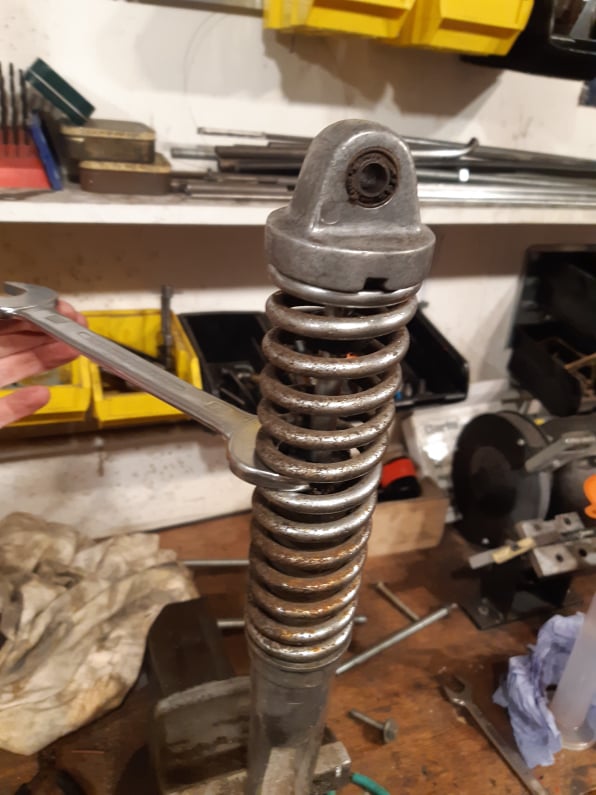
With the shock removed from the bike, a 22mm open ended spanner can be pushed between the spring coils to access the flats on the top cap.
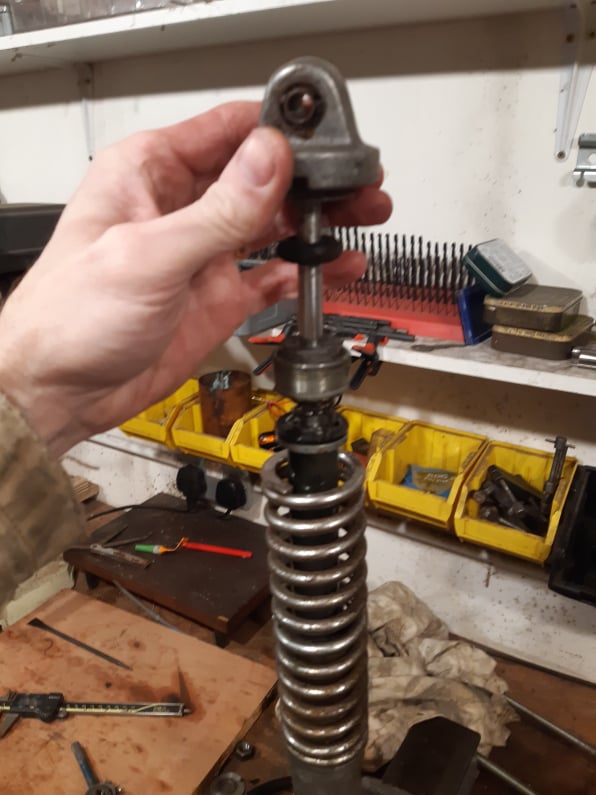
This will allow for removal of the shock workings from within the coil spring.

The oil contents were collected form the main shock housing and the inner workings and measured to be 40ml.

This image shows the contents of the piston assembly.

A large screwdriver or impact driver can be used to release the piston from the end of the plunger rod.
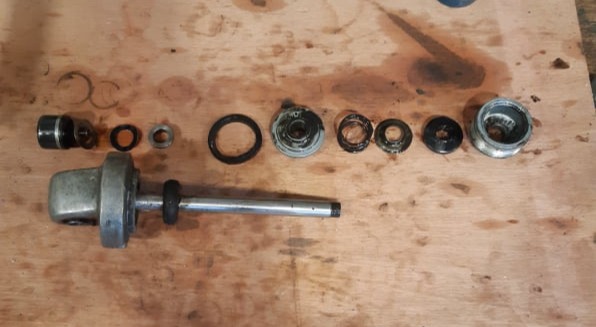
With the piston released, the parts can be removed from the plunger rod and laid out to keep them in order.
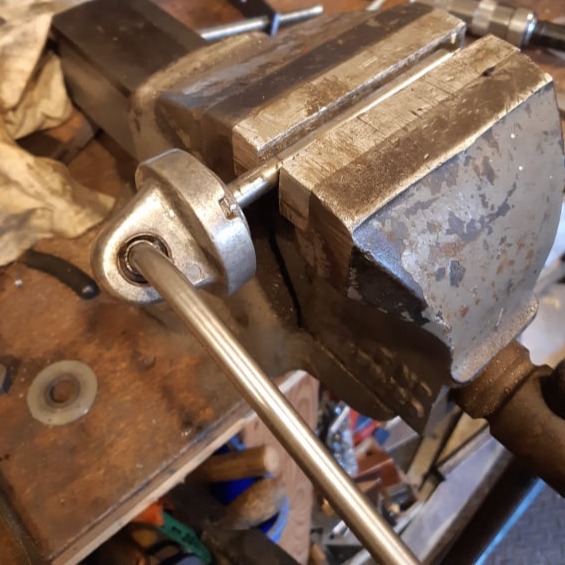
On this bike the leak was due to a corroded plunger rod. So it was planned to replace it.
The rod was very tight in the upper mounting, but was unscrewed with a long bar in the mounting eye and the rod gripped in the vice.

The rod was slightly under 10mm diameter (perhaps 3/8") and...
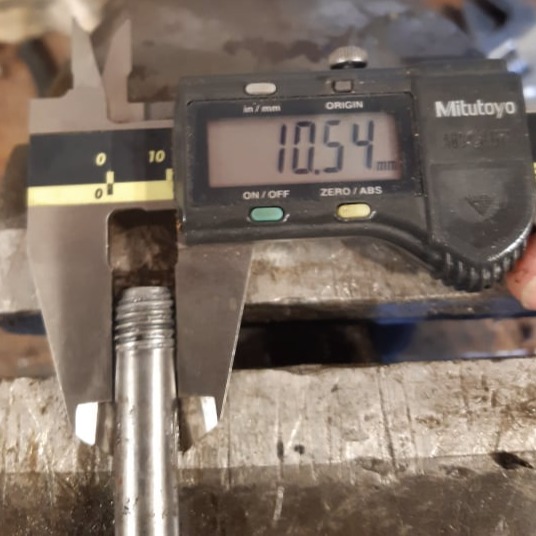
...the thread at the top had been rolled on, to make it larger than the shaft.
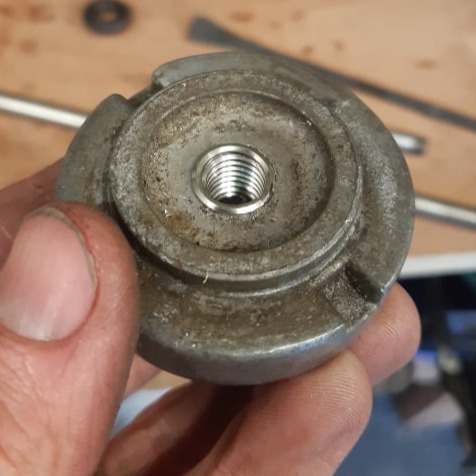
The plan was so make a new rod from 10mm steel.
It would have a 10mm thread at the top which would necessitate a helicoil into the top mounting.
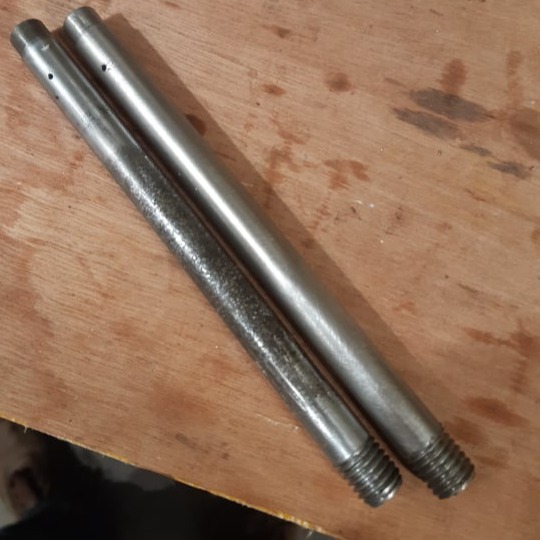
The lathe was used to copy the plunger rod dimensions but using a 10mm diameter rod.

The dimensions used for the replacement rod are given in the drawing above.
An M10 x 1.5mm top thread was used.
The internal thread the other end was a Metric M7 x 1mm, at least 29mm deep.
The small 1mm oil hole was only drilled on one side, through into the threaded cavity.

The top cap and guide bush were both reamed out to 10mm for the new plunger rod.
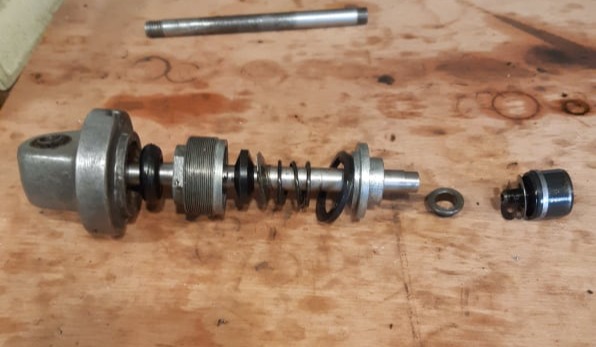
The parts were assembled on the new plunger rod in the original order.
The seal in the top cap was a tighter fit on the larger rod, but was found to slide OK.
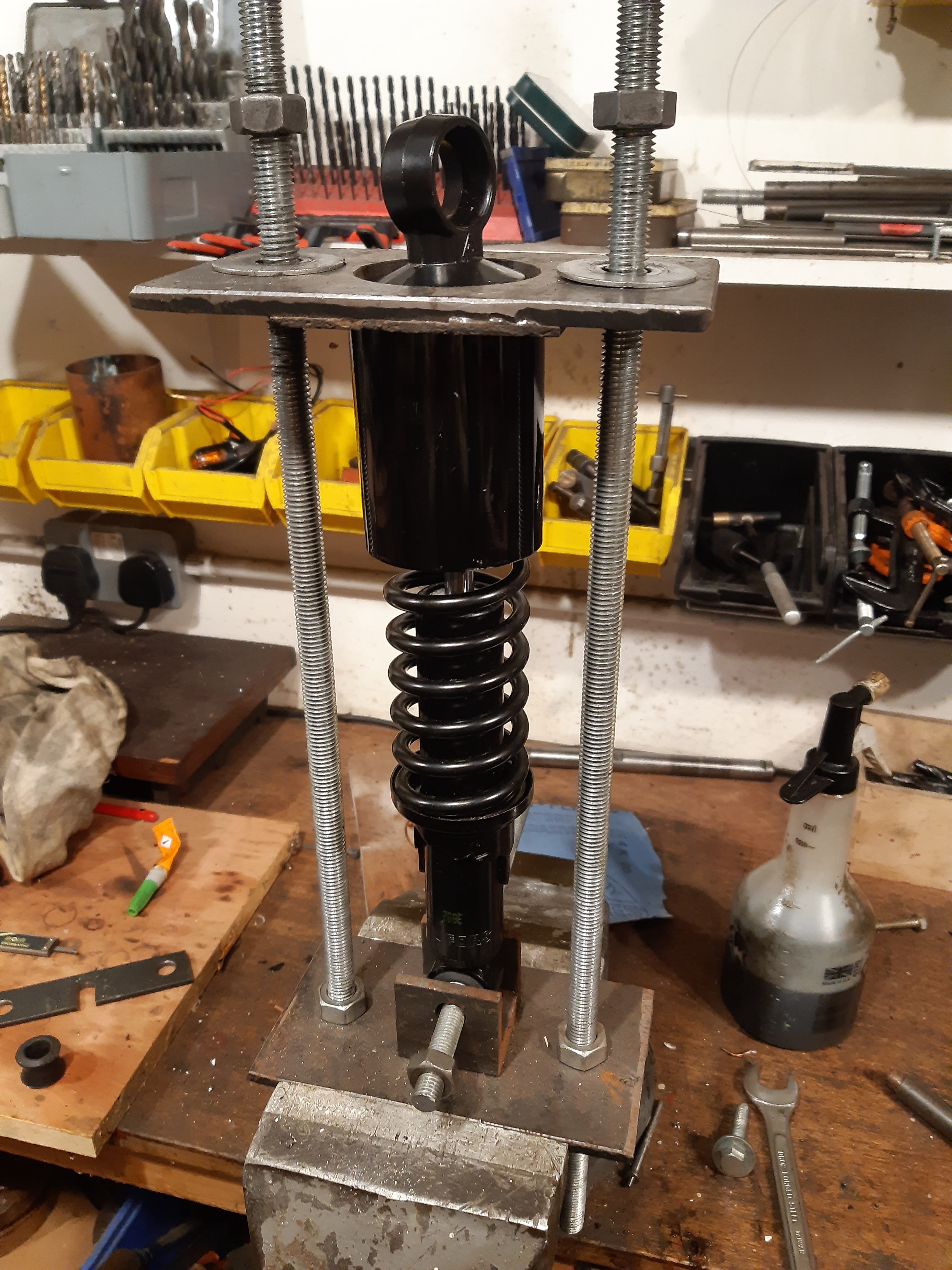
Replacement springs were unavailable, so some cheap motorcycle shocks were dismantled using the spring compressor tool.

The spring rate on the Puch shocks was measured using the bathroom scales and the drill press to push down on the spring a known distance.
The result was that the Puch spring rate was 2Kg/mm
The replacement springs had a rate of 1.8Kg/mm

The replacement springs were the correct length, wire gauge, coil count and ID.
So for a lightweight rider were judged to be acceptable.
To source similar shocks, these were made by Forsa and were part number 807E.

The rebuilt shocks were filled with 40ml of 5w oil.......

....and fitted back on the bike.
AI Website Builder